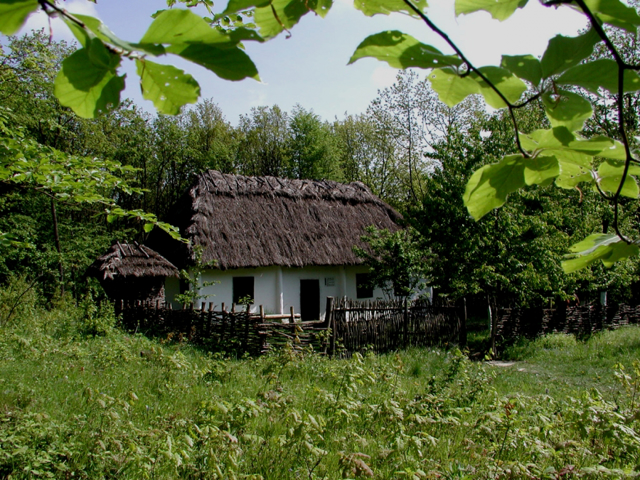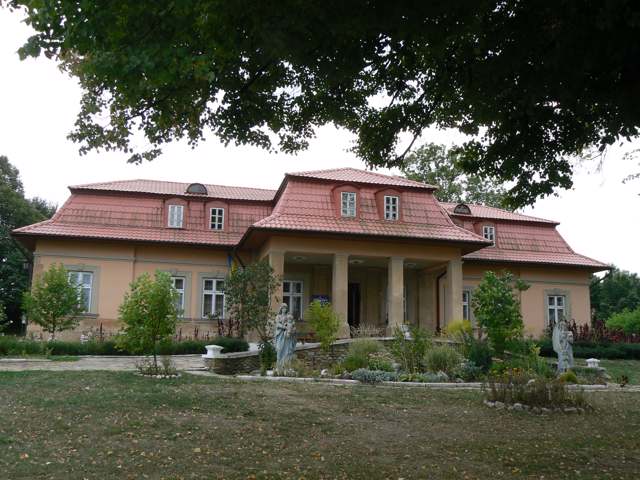Functional temporarily unavailable
Krylos
Travel guide online Krylos
General information about Krylos
A village on the r. Lukva (a tributary of the Dniester) 6 km from Halich. Here was one of the most ancient cities of Ukraine, which gave the name to neighboring Halich and all of Halicia. According to legend, it was founded by the leader of one of the Croatian tribes named Hal or Halitsa. The first mentions of the city are found in the 9th century, it became the capital of the principality in the 12th century. under Volodymir Volodarevich and Yaroslav Osmomysl, reached its peak in the XIII century. under Roman Mstislavich. In the 1240s. Danila Halitsky moved the capital to Kholm, but Halich remained an influential political and spiritual center for a long time. The Halicia-Volyn Chronicle and one of the oldest monuments of Old Ukrainian writing - the Halician Gospel - were created here. ...
A village on the r. Lukva (a tributary of the Dniester) 6 km from Halich. Here was one of the most ancient cities of Ukraine, which gave the name to neighboring Halich and all of Halicia. According to legend, it was founded by the leader of one of the Croatian tribes named Hal or Halitsa. The first mentions of the city are found in the 9th century, it became the capital of the principality in the 12th century. under Volodymir Volodarevich and Yaroslav Osmomysl, reached its peak in the XIII century. under Roman Mstislavich. In the 1240s. Danila Halitsky moved the capital to Kholm, but Halich remained an influential political and spiritual center for a long time. The Halicia-Volyn Chronicle and one of the oldest monuments of Old Ukrainian writing - the Halician Gospel - were created here. In 1303, the Halician Metropolitanate was founded, the higher clergy were called the Greek word "kliros", which is where the present name comes from. And Halich himself, after a series of devastating Tatar raids, moved to the citadel at the trading pier on the banks of the Dniester, where it is located now. On the territory of the village, the ramparts of the fortress, the prince's well, the chambers of the metropolitans, the Assumption Church (XVI century) and the foundations of ancient Rus churches have been preserved. According to legend, the founder of the city was buried under the Halicia mound in the Kachkiv tract. All objects are part of the National Reserve "Ancient Halich". A historical museum and a museum of folk architecture are open at the site.
Село на рІчці Луква (притока Дністра) в 6 км від Галича. Тут знаходилося одне з найдавніших міст України, що дало ім'я сусідньому Галичу і всій Галичині. За легендою, заснований вождем одного з хорватських племен на ім'я Гал або Галиця. Перші згадки про місто зустрічаються в IX ст., столицею князівства воно стало в XII ст. при Володимирі Володаревичі та Ярославі Осмомислі, найбільшого розквіту досягло в XIII ст. за Романа Мстиславича. В 1240-х рр. Данило Галицький переніс столицю до Холму, однак Галич ще довго залишався впливовим політичним і духовним центром. Тут створений Галицько-Волинський літопис і одна з найдавніших пам'яток староукраїнської писемності - Галицьке Євангеліє. В 1303 році була заснована Галицька митрополія, вище духовенство іменувалося грецьким словом &qu ...
Село на рІчці Луква (притока Дністра) в 6 км від Галича. Тут знаходилося одне з найдавніших міст України, що дало ім'я сусідньому Галичу і всій Галичині. За легендою, заснований вождем одного з хорватських племен на ім'я Гал або Галиця. Перші згадки про місто зустрічаються в IX ст., столицею князівства воно стало в XII ст. при Володимирі Володаревичі та Ярославі Осмомислі, найбільшого розквіту досягло в XIII ст. за Романа Мстиславича. В 1240-х рр. Данило Галицький переніс столицю до Холму, однак Галич ще довго залишався впливовим політичним і духовним центром. Тут створений Галицько-Волинський літопис і одна з найдавніших пам'яток староукраїнської писемності - Галицьке Євангеліє. В 1303 році була заснована Галицька митрополія, вище духовенство іменувалося грецьким словом "клирос", звідки пішла нинішня назва. А сам Галич, після серії руйнівних татарських набігів, перемістився до цитаделі біля торгової пристані на березі Дністра, де розташований і зараз. На території села збереглися вали фортеці, княжий колодязь, палати митрополитів, Успенська церква (XVI ст.) та фундаменти давньоруських храмів. Під курганом Галичина могила в урочищі Качків, за переказами, похований засновник міста. Всі об'єкти входять до складу Національного заповідника "Давній Галич". На городищі відкрито історичний музей і музей народної архітектури.
Сплануй своє перебування у Krylos
What to see and where to go in Krylos
Tourist attractions and museums of Krylos

Museum of Ethnography
Ethnographic complex , Museum / gallery
The open-air museum is located on the territory of the ancient settlement, on the first line of the defensive ramparts. The island of folk architecture acquaints visitors with the life of the inhabitants of Prykarpattia in the XVII-XX centuries. On the territory of 4.5 hectares there are traditional dwellings of four ethnographic districts: Pokuttya, Hutsulshchyna, Boykivshchyna and Opillya. Currently, 11 original monuments of folk architecture are collected here, in the interiors of which ancient household items are exhibited.

Museum of the History of Halych (Metropolitan Chambers)
Museum / gallery
The Museum of the History of Ancient Halych is located in the former Metropolitan Chambers - an architectural monument of the eighteenth century. After the destruction of ancient Halych by the Tatars in the XIII century. and the transfer of the capital of Galicia to Kholm, then to Lviv, the former prince's child remained the residence of the Galician metropolitans. In particular, there was a summer residence of Metropolitan Andriy Sheptytsky, with the help of which in 1937 archaeologist J. Pasternak founded the first museum of ancient Halych. Initially, the exposition of finds from excavations in the village of Krylos was located in the chapel of St. Basil. In the 1990s, the exhibition was moved to the restored premises of the Metropolitan Chambers. Here are the tools of the Copper, Bronze and Iron Ages, ancient weapons, including the ancient Rus princely sword of the XII century.
Reviews Krylos
Geographical information about Krylos
| {{itemKey}} | {{itemValue}} |
|---|---|
| Region |
Ivano-Frankivsk |


